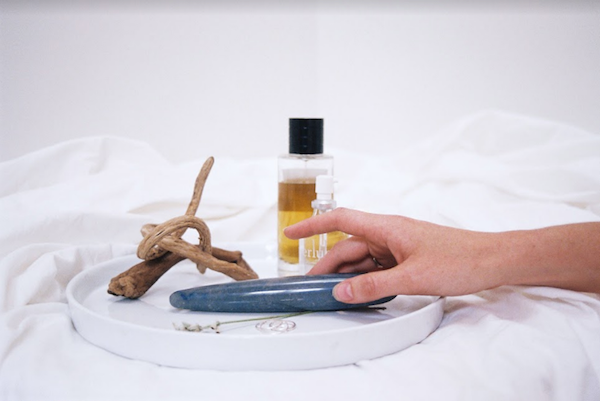
Casual (But Careful) Sex
With the ubiquity of hookup apps like Tinder, Grindr and Bumble comes the potential for more sex—like, a lot more sex. While it is helpful to screen your partners socially—seriously, what is with some people’s Tinder bios?—it’s not possible to know about your prospective partner’s sexual history or health without talking, and taking some healthy, preventative measures.
Read on for our guide to getting it on casually, yet carefully...
Get educated.
You know the names of common STDs, like chlamydia and gonorrhea, but do you know how they are transmitted?
Many STDs are transmitted through infected bodily fluids, such as vaginal fluids, semen, blood and saliva. But some others, like herpes and HPV, can be transmitted through skin-to-skin contact, even if you’re wearing condoms or other prophylactics. In fact, it’s possible to transmit herpes, HPV and even syphilis through oral-genital contact.
One way to prevent against STD transmission is to be aware of common infections and their symptoms. If you see something like a sore on your partner’s mouth or genitals, or notice that something looks or smells funky, it’s OK to pump the brakes. Don’t shame your partner, but be honest and clear about your boundaries.
Know your status.
If you’re single and having casual sex on the regular, or partnered but in an open relationship, it’s good common sense to get tested regularly for sexually transmitted diseases, whether or not you use protection. Many STDs are only diagnosable weeks or months after transmission, because STD tests don’t actually detect the presence of a virus, they detect the antibodies that your immune system produces in response.
Everyone gets a little nervous about STD testing, but look at it this way—it’s better to know your status and be able to do something about it, than to assume all is well, and potentially contract an STD, or spread one to other partners. Most sexually transmitted infections are curable, with the exception of herpes, HPV, HIV and some types of hepatitis. So suck it up, get tested and take any medications as prescribed to clear up a pesky STD.
If you are diagnosed with an STD, it’s your responsibility to either abstain from sexual activity, or disclose your status to partners. This can be embarrassing, and not everyone is understanding, because unfortunately there is still a lot of stigma around STDs, especially incurable ones. But really, honesty is the best and only policy when it comes to sexual health.
Use protection!
Some people will make any excuse not to use condoms, gloves or dental dams—they’re a turn-off, they decrease sensation, they look silly, they cost money. Well, you know what else is an expensive turn-off that makes you look silly and costs money? Throwing caution to the wind and getting a preventable STD!
Look, we’re not saying that all prophylactics are 100% effective in preventing STDs, but they are around 95-98% effective when used consistently and as directed. (Not bad, eh?) Especially if you’re having sex with multiple partners, it’s as safe a bet as you’re gonna get. And these days, they make condoms in all kinds of thinnesses, textures, lubrication levels and even flavors, so there is really something for everybody.
If your partner complains about having to use protection, then use your judgement—it can be really hard to say no to sex, but your health and safety are priority. One hookup is never worth your health.
We also acknowledge that not everyone has access to safe, affordable supplies or accessible information. Planned Parenthood and many other clinics offer free brochures on sexual health and safety, not to mention supplies. There are also online locators like Condom Finder that can help you get your hands on condoms, totally gratis.
Be honest.
Casual hookups aren’t entitled to a detailed account of your entire sexual history, but they are entitled to know if you have an STD. Treat others the way that you would want to be treated, and be up front with them if you are currently being treated, or have had unprotected sex. By the same token, don’t be afraid to ask your partners if there is anything you should know, or to see the results of their most recent STD test.
If you’ve had a slip-up, like unprotected sex, or a broken or misused condom, don’t panic. Call your doctor, pharmacist or local healthline for advice. Even if you’re freaking out and ready to rush to the clinic, your doctor may recommend that you wait and come in for testing later, to account for the window of transmission. If you’re at risk of getting pregnant, sit tight and take a morning-after pill.
Get creative.
Even if you’ve been diagnosed with an STD, that doesn’t mean that any and all sexual pleasure is off the table. There are plenty of ways to engage with your partner that don’t involve direct sexual contact!
Sexting is a fun, easy way to get intimate with a partner. Sure, it would be great if you could actually have sex, but pictures, videos and dirty talk are all doable and can build sexual tension in a really pleasurable way.
In person, you can always masturbate in front of each other. Not everyone is comfortable with this level of visibility or vulnerability, but it’s so, so sexy to watch and be watched, and you can always bring some toys into the mix!



